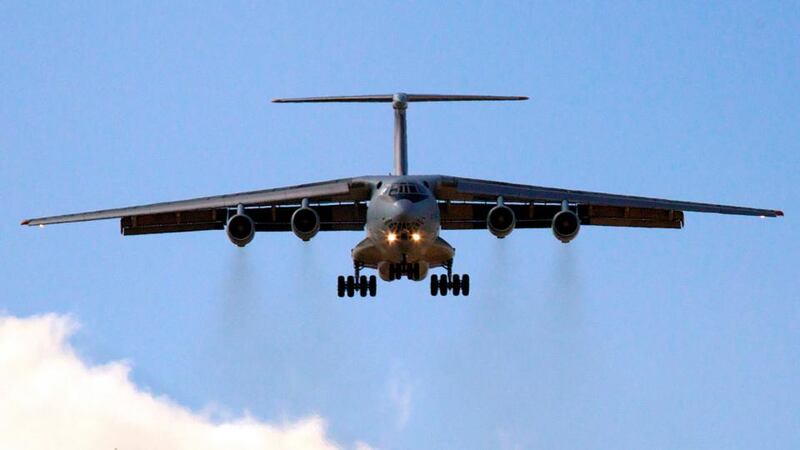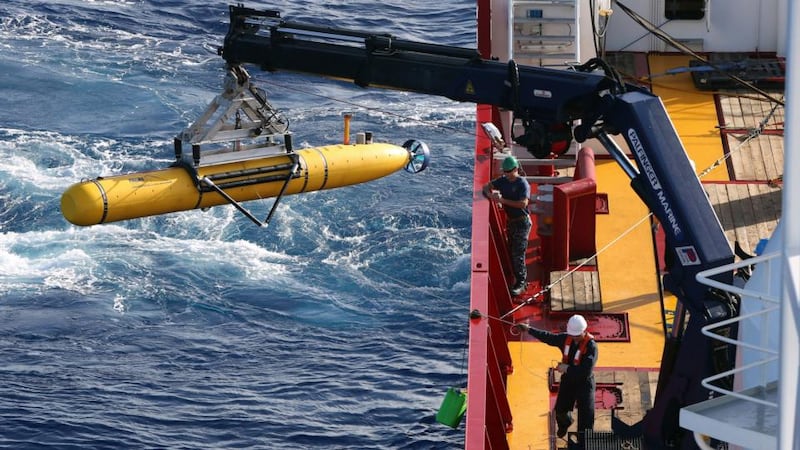A deep-sea drone had completed its much-anticipated first full scan of the seabed in the remote Indian Ocean, the team looking for a missing Malaysian jetliner said on Thursday, as an air and surface search became less likely to yield results.
Footage from a US Navy deep-sea drone is fast becoming the most important tool for a multinational team still searching for Malaysia Airlines flight MH370, which disappeared from radar screens on March 8 with 239 people aboard.
A sample taken from an oil slick in the same area, some 2,000 km (1,240 miles) west of the Australian city of Perth, is also being analysed. Authorities believe that is the most likely area where the missing jet hit the ocean after disappearing.


A series of “pings” recorded earlier this month have led searchers to the remote stretch of ocean in the belief that the signals may have come from the plane’s black box recorders.
However, with no pings received in more than a week and the black box’s battery now 10 days past its approximate expiry date, authorities are relying on the drone.
The Bluefin-21 drone completed its first full 16-hour deployment at a depth of 4.5 km late yesterday after a series of technical problems cut short the first two attempts.
"Bluefin-21 has searched approximately 90 square kilometres to date and the data from its latest mission is being analysed," the Joint Agency Coordination Centre, the body running the search, said in a statement.
On Monday, the search coordinator, retired Air Chief Marshal Angus Houston, said the air and surface search for debris would likely end in three days as the operation shifted its focus to the largely unmapped area of ocean floor.
However, authorities said on Thursday up to 10 military aircraft, two civil aircraft and 11 ships would still search an area totalling about 40,000 square km. That would suggest searchers, under pressure from the families of those on board the plane, still hold some hope of finding floating wreckage.
Australian Prime Minister Tony Abbott was quoted by The Wall Street Journal on Wednesday as saying that "we believe that (underwater) search will be completed within a week or so. If we don't find wreckage, we stop, we regroup, we reconsider".
Asked by Reuters on Thursday to clarify Abbott’s comments to the newspaper, his office said he was only suggesting that authorities may change the area being searched by the Bluefin-21 drone, not that the search would be called off.
"They've been looking for 40 days and haven't found anything floating yet," Geoffrey Dell, Associate Professor of Accident Investigation and Forensics at Central Queensland University, told Reuters.
“You’d have to start saying there’s either nothing to find or let’s move elsewhere,” he said.
As well as the Bluefin-21, authorities are relying on daily modelling of ocean currents provided by the Commonwealth Scientific and Industrial Research Organisation’s (CSIRO) Marine and Atmospheric Research unit, which may give clues about how any surface debris may have dispersed.
“People are spending a lot of their time at the moment looking at the daily models to provide updates,” Nick Hardman-Mountford, the CSIRO’s principal marine scientist, told Reuters.
“The winds, ocean currents, the time and cyclones passing through, they can all have an influence on what the ocean currents are doing and the model has to be able to capture all of this,” Hardman-Mountford said.
Houston has hinted that the search, although not yet over, may already rank as the most expensive in aviation history, although authorities are yet to put even an approximate price tag on it.








